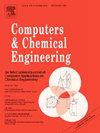Surrogate modeling and optimization of the leaching process in a rare earth elements recovery plant
IF 3.9
2区 工程技术
Q2 COMPUTER SCIENCE, INTERDISCIPLINARY APPLICATIONS
引用次数: 0
Abstract
Critical minerals (CMs) and Rare Earth Elements (REEs) play a vital role in crucial infrastructure technologies such as renewable energy generation and batteries. Recovering them from waste materials has recently been found to significantly reduce environmental impact and supply chain costs related to these materials. In this work, we investigate surrogate modeling techniques aimed to simplify the modeling, simulation, and optimization of the leaching processes involved in CM and REE recovery flowsheets. As there is currently a lack of systematic studies on this topic, we perform extensive computational testing to ascertain which surrogate models are easier to construct and offer high predictive accuracy. Our results suggest that sparse quadratic models balance predictive accuracy and computational efficiency. Training and using these surrogates for global optimization of the leaching process requires two orders of magnitude fewer measurements and is up to four orders of magnitude faster than optimizing the original simulation using equation-oriented optimization or derivative-free optimization.
稀土元素回收厂浸出过程的代理建模与优化
关键矿物(CMs)和稀土元素(ree)在可再生能源发电和电池等关键基础设施技术中发挥着至关重要的作用。最近发现,从废物中回收这些材料可以显著减少对环境的影响,并减少与这些材料相关的供应链成本。在这项工作中,我们研究了替代建模技术,旨在简化CM和REE回收流程中浸出过程的建模、模拟和优化。由于目前缺乏对这一主题的系统研究,我们进行了广泛的计算测试,以确定哪些替代模型更容易构建并提供高预测准确性。我们的研究结果表明,稀疏二次模型平衡了预测精度和计算效率。训练和使用这些替代物进行浸出过程的全局优化需要减少两个数量级的测量,并且比使用面向方程的优化或无导数优化优化原始模拟快多达四个数量级。
本文章由计算机程序翻译,如有差异,请以英文原文为准。
求助全文
约1分钟内获得全文
求助全文
来源期刊

Computers & Chemical Engineering
工程技术-工程:化工
CiteScore
8.70
自引率
14.00%
发文量
374
审稿时长
70 days
期刊介绍:
Computers & Chemical Engineering is primarily a journal of record for new developments in the application of computing and systems technology to chemical engineering problems.
 求助内容:
求助内容: 应助结果提醒方式:
应助结果提醒方式:


